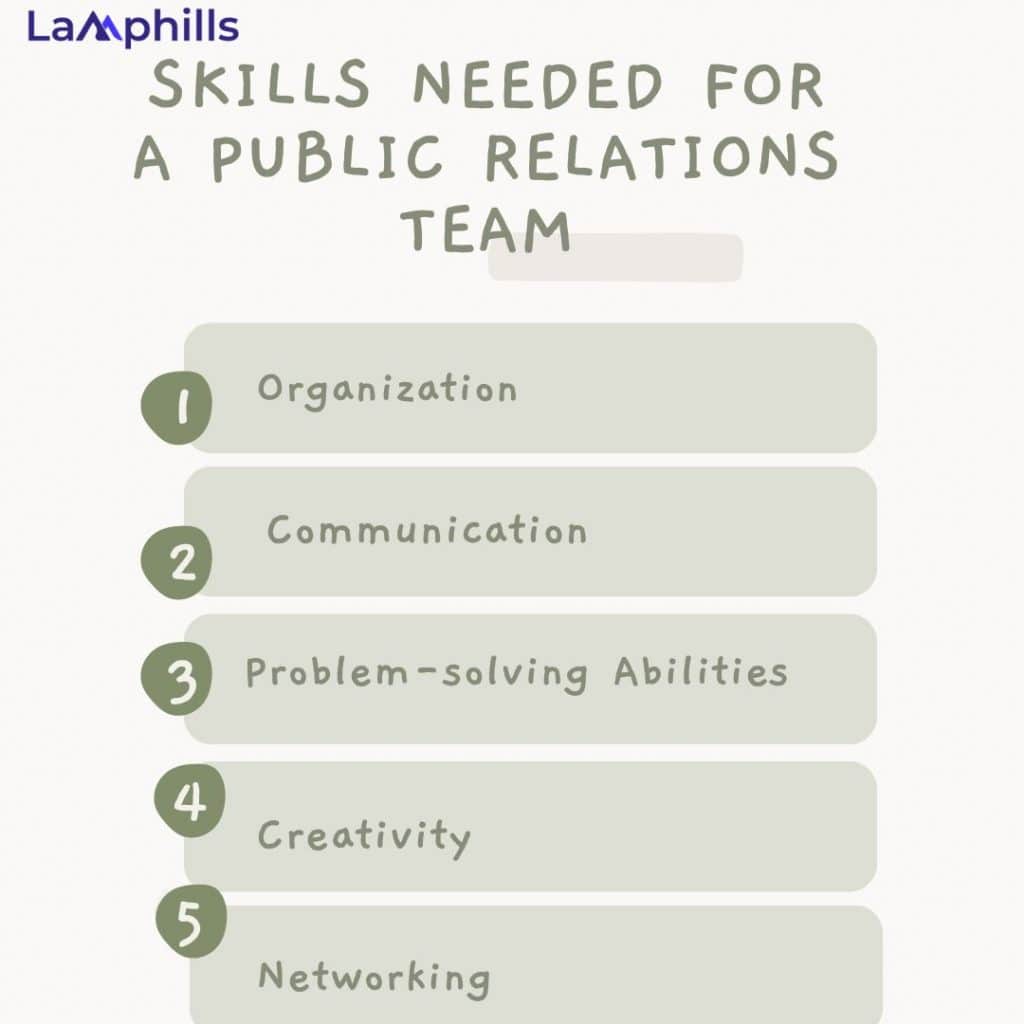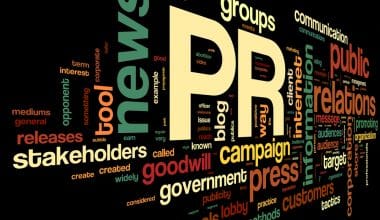A PR team is not just about sending out press releases. It’s about crafting a story that connects with people. It’s about building relationships with media, influencers, and your audience. The right PR team can turn a struggling business into a thriving one by getting your message out there in the right way.
Creating a PR team for your business can seem challenging, but it’s manageable with the right steps. From identifying your needs to finding the right people and tools, setting up a PR team is a game-changer. My journey with building a PR team taught me valuable lessons that can help any business, big or small, gain the visibility it deserves. Let’s go into how you can create an effective PR team for your business.
Key points
- PR is a juggling act, so finding people who can keep all the balls in the air is key. To make sure everyone’s a good fit, you’ll be digging deep into their experience and skills to see if they align with your needs.
- Depending on the size of the organization and your PR goals, the team structure might differ. You might need a lead PR person to manage everyone and oversee all activities.
- A PR team can be your SEO and content marketing sidekicks. They’ll help you develop SEO and content marketing strategies to improve your search engine ranking.
- PR isn’t just about putting out information. They constantly analyze data, like media coverage and customer feedback. Also, they’re critical thinkers, always questioning and evaluating to develop winning strategies.
- PR isn’t just about shouting your message. It’s about educating your audience. PR helps you share valuable information about your products and services, and address their pain points.
Understanding PR Team
The PR team, or public relations team, is like the frontline soldiers of a company. They’re the ones who manage the company’s image and communication with the public. If a company has a new product crisis, the PR team immediately gets to work. They will monitor social media, draft responses, and calm the storm.
Now they don’t just handle crises, they also create positive stories about the company. For example, if my company sponsors a charity event, the PR team will make sure it is covered in local news. They will write press releases, pitch stories to journalists, and even arrange interviews for our executives. All this helps the public see the good things our company does.
Another important task for the PR team is managing relationships. They build connections with journalists, influencers, and customers. The PR team also plays a crucial role internally. They keep employees informed and motivated. If you’re having a product crisis, it is the PR team’s job to send regular updates, ensuring everyone knows the plan and can help in their roles. This unity makes responses stronger.
Every day for the PR team is different. One day, they might be planning a product launch event, coordinating with designers, and arranging media coverage. Another day, they could be writing blog posts or managing the company’s social media accounts.
In essence, the PR team is the voice of the company. They craft messages, shape public perception, and build lasting relationships. Whether handling a crisis or promoting a new initiative, the PR team is always at the heart of a company’s communication strategy. Their work might not always be visible, but it’s vital to the company’s success.
Lamphills How to Create a PR Team Template
How to Create a Public Relations Team
Creating a public relations team is not just a task but an art form. I’ve been in the field for years and have also seen what works and what doesn’t. Building a team from scratch takes a strategic approach and a clear vision. Here’s a step-by-step guide on how to do it, benefiting from my experience guiding you through the process.
#1. Outline Your Objectives
Start by defining clear objectives and goals. Knowing what you want your public relations team to achieve is crucial. Do you want to boost brand awareness? Handle crises? Engage with the community. Write these down. Clear goals will guide every decision you make as you build your team.
#2. Selecting the Right People is Key
Look for candidates with relevant experience and a passion for communication. Interview them thoroughly. Ask about their past projects, how they handle stress, and their approach to crisis management. The need for creativity is also important because PR is not just press releases. It’s about social media engagement, influencer outreach, and crafting compelling stories. Additionally, organization and multitasking are also important.
#3. Identify Key Roles
Next, figure out the roles you need. A solid Public Relations team usually includes a PR manager, media relations specialist, content creator, and social media coordinator. Each role has a specific function. For example, the PR manager oversees the strategy while the media relations specialist handles press contacts. Also, this clarity ensures effective contribution and prevents overlap or wasted effort. It’s like a well-oiled machine, with each part working seamlessly to achieve the bigger goal. Delegating roles ensures everyone understands their responsibilities and contributes efficiently to the PR efforts.
#4. Exploiting Different Skills
Think of a team with a mixture of backgrounds and experiences. A tech expert who understands the digital landscape, a seasoned writer who can craft an authentic press release, and maybe even someone with a background in event planning to handle those important media gatherings. Generally, this creates a well-rounded team with diverse perspectives that will ignite PR campaigns and strategies. Remember, a variety of skill sets pave the way for achieving goals more effectively.
#5. Build Relationships
Building relationships is a cornerstone of public relations. Your team should start by identifying key media contacts, influencers, and community leaders. Foster these relationships through regular communication, providing valuable information, and showing appreciation.
#6. Create Engaging Content
Content is king in public relations. Your team should consistently produce engaging, relevant content. This includes press releases, blog posts, social media updates, and more. Great content keeps your audience informed and engaged, and it’s a key part of your PR strategy.
#7. Team Structuring
Depending on the organization’s size and your PR goals, the team structure might be different, so you might need a lead PR person to manage everyone and oversee all activities. Or maybe sub-teams focusing on media relations, social media, and crisis communication make more sense. The key is to find the structure that optimizes PR efforts and sets us up for success.
Building a PR team is about more than just hiring people. It’s about creating a strategic unit with the right skills, experience, and diverse perspectives. By following these steps, we can build a dream team that will not only tell your brand story but also make it resonate with the world.
Reasons to Create a PR Team.
Back in 2018, I worked with a small tech startup that had just launched its first product. We were all thrilled, but soon realized that getting the word out was tougher than expected. Our emails to journalists went unanswered, and our social media posts barely got any engagement. That’s when we decided to create a PR team, and it changed everything for us.
Creating a PR team can be a game-changer. A dedicated PR team understands how to craft the right message and deliver it effectively. They know the media landscape and have established relationships with journalists and influencers. This means your news gets noticed.
One reason to create a PR team is to control your brand’s story. Without a PR team, you risk others shaping the narrative for you. A PR team ensures that your company’s voice is heard clearly and accurately. They can quickly address any misinformation, keeping your brand’s reputation intact.
Another reason to create a PR team is to build and maintain a positive public image. They handle everything from press releases to social media campaigns, ensuring a consistent and positive message. Also, this builds trust with your audience and can attract more customers and partners.
Crisis management is another critical reason to create a PR team. In today’s fast-paced world, bad news spreads quickly. A PR team is trained to handle crises efficiently, minimizing damage to your brand. They can swiftly respond to negative press and work to restore your reputation.
Creating a PR team also helps expand your reach. They have the skills to get your message to a broader audience through various channels. Whether it’s traditional media, online platforms, or events, a PR team ensures your message is everywhere it needs to be.
In the end, the decision to create a PR team is about investing in your brand’s future. It’s about making sure your story is told the right way, building a strong public image, managing crises effectively, and reaching more people. That’s the power of having a PR team on your side.

Skills Needed for a Public Relations Team
Having spent years in the PR world, I’ve seen firsthand what it takes to excel in this fast-paced field. Public relations (PR) is all about shaping and maintaining a positive image for clients. To do this effectively, a PR team needs a mixture of specific skills
#1. Organization
Organization cannot be overlooked. coupled with multiple tasks, managing deadlines, and keeping track of all the moving parts of a campaign requires a high level of organization. Hence, good organizational skills ensure nothing falls through the cracks.
#2. Communication
Communication is very important. Every PR professional must be able to convey messages clearly and persuasively. Whether it’s writing press releases, speaking at events, or pitching stories to the media, strong communication skills are a must.
#3. Problem-solving Abilities
Problem-solving is another key skill. The PR world is fast-paced and unpredictable. Issues can arise at any moment. A team that can think on their feet and find solutions quickly will handle crises better and maintain the client’s reputation.
#4. Creativity
Creativity also plays a big role. PR teams often brainstorm ideas for campaigns or events that grab attention. They need to think outside the box to create unique and compelling content that stands out in a crowded media landscape.
#5. Networking
Networking skills are essential too. Building relationships with journalists, influencers, and other key players can make a huge difference in how a client’s story gets told. A PR team needs to connect and build trust with these people to secure positive coverage.
Benefits of PR Team
Let me take you back to a moment during a product launch event I was part of. Our team had been strategizing for weeks, crafting press releases, reaching out to media outlets, and building relationships with influencers. When the big day arrived, the benefits of having a PR team became clear, which brings me to the many benefits of having a PR team, and here’s why PR is a must-have in your marketing strategies:
#1. Boost Your Brand
PR helps you spread the word about your innovative products or services, reaching a wider audience and boosting brand awareness. Imagine PR as your megaphone, getting your message out there and generating excitement.
#2. Craft a Positive Image
Once people know your brand exists, PR helps shape a positive image in your target market. Think of PR as an artist who paints a picture of your company—a picture that showcases your strengths and builds trust.
#3. Build Credibility
A positive brand image goes hand-in-hand with credibility. PR helps establish trust by getting others to sing your praises. Positive media coverage and industry recognition act as endorsements, making you a more believable player.
#4. Attract New Customers
Stronger credibility and reputation lead to more leads. Effective PR strategies make you more discoverable to potential customers, drawing them in like a magnet.
#5. Impress Investors
Do you need funding? PR can help with strategic media placements, which can help showcase your company’s value to potential investors, making you a more attractive investment opportunity.
#6. Improved Media Relations
PR builds strong relationships with journalists and media outlets. Also, by consistently providing newsworthy content, you become a trusted source they’ll turn to for stories, putting your brand in the spotlight.
#7. Leverage Third-Party Endorsements
Third-party endorsements hold immense weight. PR strategically places your brand stories in front of relevant audiences, getting positive mentions from respected sources.
#8. Safeguard Your Reputation
PR teams work tirelessly to build and maintain a positive brand reputation that consumers can rely on. Think of PR as a shield, protecting your brand image from negativity.
#9. Educate Your Audience
PR is not just about being known, PR is also about educating your audience. PR helps you share valuable information about your products and services, address their pain points, and establish yourself as a thought leader.
By elevating brand awareness, collaborating with trusted endorsers, and educating your audience, PR builds lasting credibility and reputation—all essential ingredients for success.
Disadvantages of PR Team
PR teams are important for shaping public perception and managing crises. But just like any other aspect of business, it comes with its fair share of challenges. Here are some PR drawbacks I listed for you.
#1. Measurement Challenges
Unlike some straightforward marketing methods, PR doesn’t come neatly packaged with metrics, so you need to channel your metrics to fit your goals, aligning your PR efforts with your broader marketing strategy to gauge progress and change your approach as you go. Also, this allows you to assess progress and make adjustments as needed.
#2. Limited Control
The success of a PR campaign often depends on the willingness of journalists and other media outlets to publish your content. You launch your story, but there’s no guarantee it will get picked up. And so, it’s more like planting seeds, you nurture them, but you can’t control how they grow.
#3. Keeping Up with the Times
The world of marketing and communications is constantly evolving. Also, keeping up with trends and adapting your PR strategies to these shifts can be a challenge. Hence, see PR as navigating a winding road where you need to stay alert and adjust your course as needed.
#4. No Guarantees
Just like any marketing campaign, PR doesn’t guarantee success. A poorly executed strategy might fall flat with your target audience. Also, the key message might miss the mark, and fail to resonate with potential customers.
By understanding both the advantages and disadvantages of PR, you can make informed decisions about how to manage your brand’s communication and build lasting relationships with your target audience.
What Does a PR Person Do?
- A PR (public relations) person is responsible for managing the public image and perception of a company, organization, or individual. Their duties typically include:
- Building and maintaining relationships with journalists, bloggers, and other members of the media to generate positive coverage for their clients.
- Writing and distributing press releases and media kits to announce news, events, or initiatives and attract media attention.
- Develop strategies to handle and mitigate any negative publicity or crises that may arise, such as product recalls, scandals, or legal issues.
- Managing social media accounts to engage with the audience, share updates, and respond to inquiries or comments.
- Organizing press conferences, product launches, promotional events, or other gatherings to garner media coverage and create positive publicity.
- Developing long-term PR strategies aligned with the organization’s goals and objectives to enhance its reputation and brand image.
- Creating compelling content, such as articles, blog posts, videos, or infographics, to share with the media and target audience.
- Cultivating relationships with stakeholders, including customers, investors, partners, and community members, to build goodwill and trust.
- Tracking media coverage, social media mentions, and other PR metrics to evaluate the effectiveness of PR campaigns and adjust strategies accordingly.
Who Needs PR?
Are you building a new business? PR is your secret weapon. It helps you craft a unique identity, get your name out there, and educate everyone—from the folks who invest (shareholders) to the people you serve (stakeholders) and the whole community.
Who Should go Into PR?
PR, or public relations, can be a great fit for individuals who excel in communication, relationship-building, and strategic thinking.
Related Articles
- blog.lamphills.com/terms/best-pr-firms
- blog.lamphills.com/social-media/best-social-media-customer-service-practices






